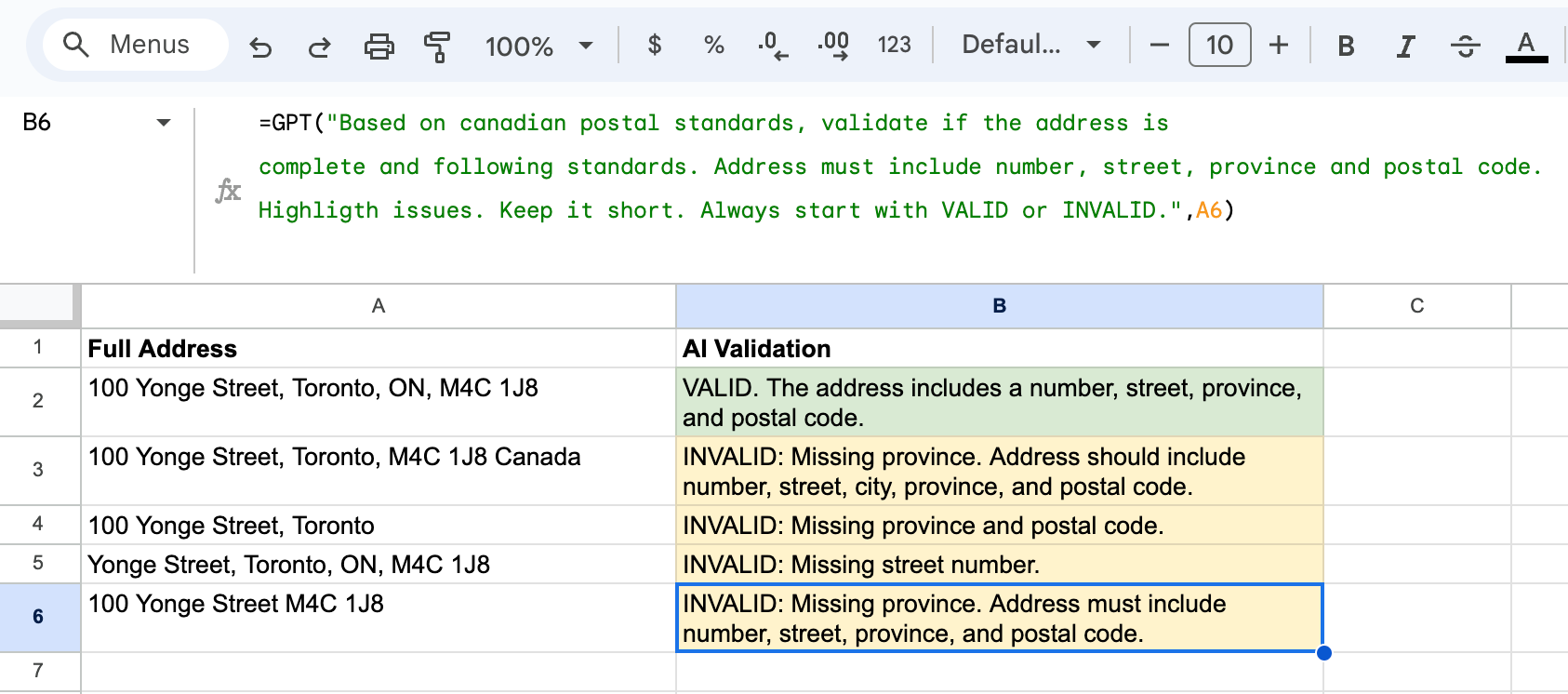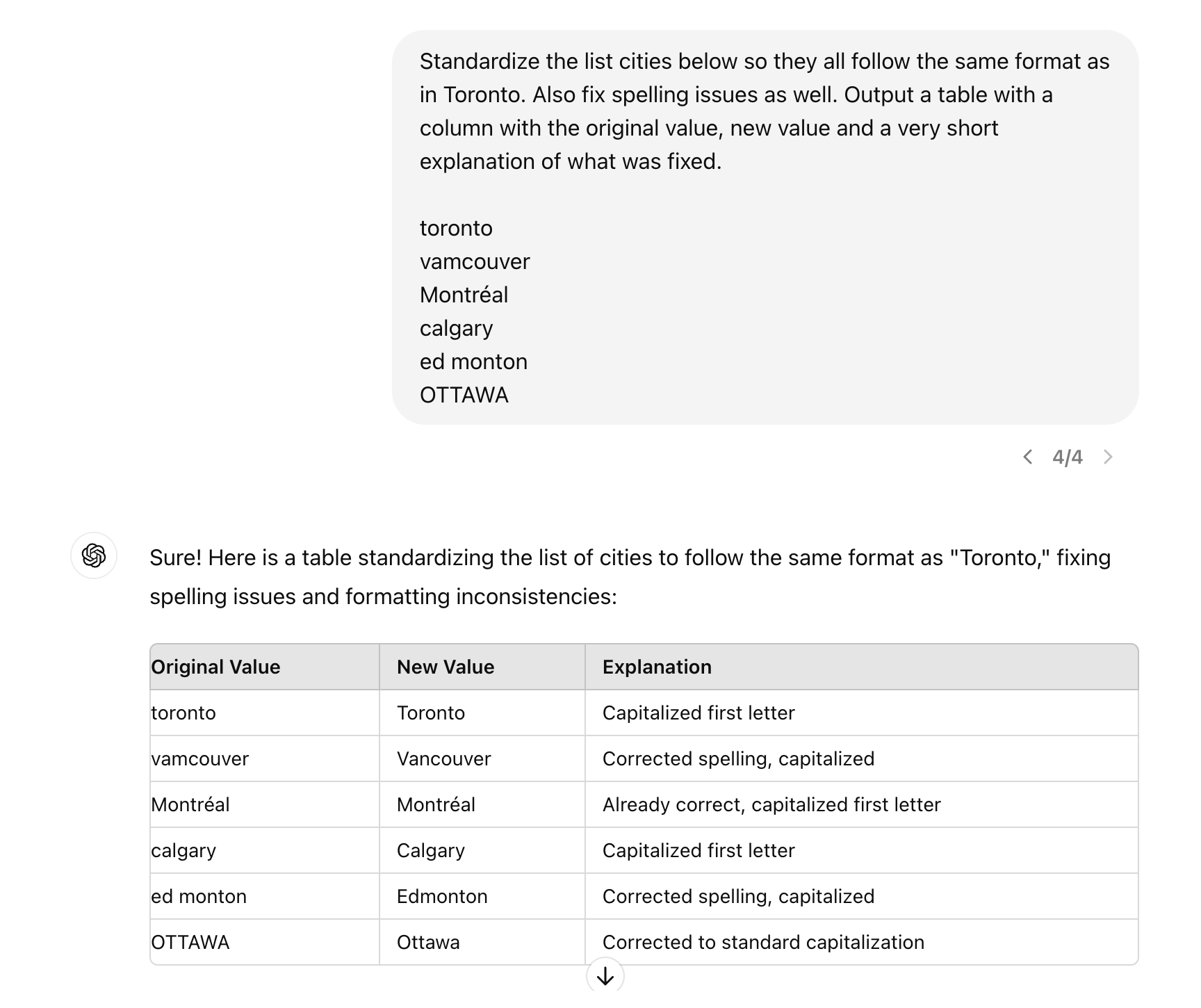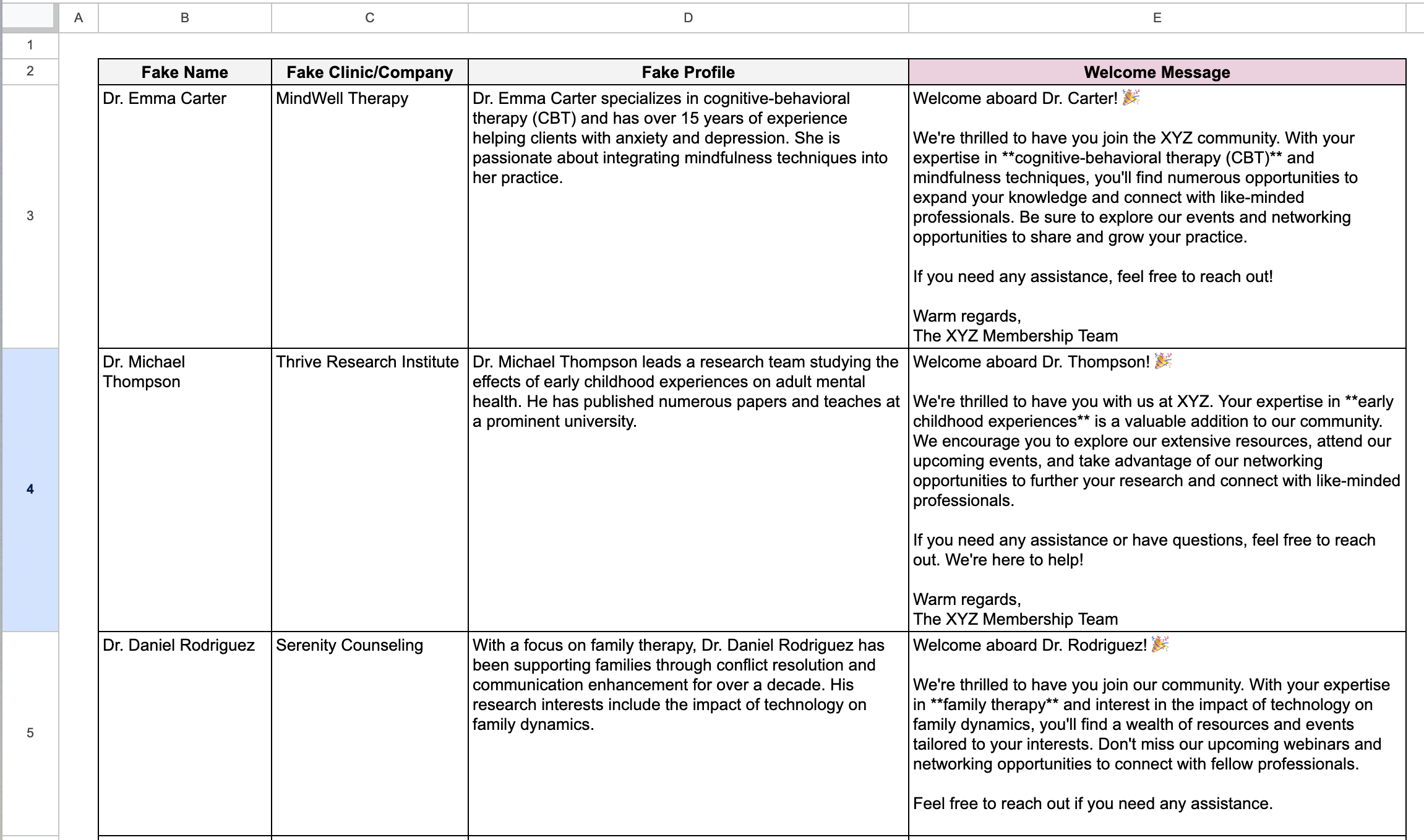AI is increasingly becoming a part of every sector, including nonprofits. With the growing adoption of CRM systems, Learning Management Systems, and Event Management solutions, nonprofits now have access to more data than ever before. This data is crucial for shaping strategies, evaluating performance, and engaging with members and donors. Objeto can help you fully utilize this data.
Here are 5 practical ways nonprofits can start using AI to enhance their operations.
Start by improving your data quality. A combination of traditional data analysis techniques with tools that use Large Language Models can help assess data quality and support a remediation process. A quick and practical way to apply AI to data cleanup is to add an AI plugin to your Excel or Google Sheets. You can use this for small and medium clean-up jobs. Check out https://sheetgpt.ai/ and https://numerous.ai/. For larger clean-up and remediation jobs we recommend getting help from specialists.
Here is simple address validation example, using a Google Sheet and the sheetgpt plugin. After you install the plugin, you get a suite of extra formulas such the one below, what allows you write any prompt and have it reference specific cells as data input. In this case, column B is calculated using the address in column A.

Here is an example where we want to validate and standardize city names. You can experiment with this type of use-case directly on the free version of Chat GPT or do in a spreadsheet as well. Let's validate and correct the list of cities below:
Prompt: "Standardize the list cities below so they all follow the same format as in Toronto. Also fix spelling issues. Output a table with a column with the original value, new value and a very short explanation of what was fixed.
toronto, vamcouver, Montréal, calgary, ed monton, OTTAWA"

Use AI to analyze member data and create personalized content. Whether it's tailored newsletters, customized learning experiences, or targeted event invitations, AI can help you deliver the right message to the right members, increasing engagement and value to members.
Here is a short example of how you can use AI to personalize a welcome message. Each cell on column E was generated specially for each member based on their small profile. You could leverage this as a message in your member portal or in a personalized onboarding email.

We have a more in depth article, explaining how AI can be used to enrich profiles if your data is weak in this area. Check it out here.
AI can efficiently summarize and categorize large amounts of information. For instance, it can help sort through survey responses, categorize feedback, and organize documents, making it easier to find and use relevant information. Similar technologies have been in use for decades by large companies in call centres for call analysis, however, they are now a fraction of the cost and several times better. The same can be achieved in a spreadsheet and for these simple operations you can even use basic LLMs that allow you do deploy this method to larger volumes of data.
Imagine an fake association of professional psychologists and assume you currently have a short-summary for each member and their company name.
You created a new taxonomy for categorizing members by 5 broad topic areas:
You can use the data you already have to quickly categorize all members with the following prompt:
Prompt: "Categorize the following member profile into one of the given categories: [Clinical Psychology], [Counseling and Psychotherapy], [Research and Academia], [Industrial-Organizational Psychology], [Health and Rehabilitation Psychology]. The category should be in brackets and followed by a short rationale (up to 10 words)."

Column E and F are calculated automatically based on the profile.
If your organization works with diverse communities, AI-powered translation tools can be a game-changer. They can quickly translate documents, emails, and other content, breaking down language barriers and improving communication. This can be of great value for internal use.
Leverage AI for predictive analytics to forecast trends and outcomes. This can help with planning fundraising campaigns, predicting volunteer turnout, or anticipating member needs, allowing for proactive and strategic decision-making.
These are some practical and already very exciting examples of what we can do with AI to be more efficient and avoid work that would be otherwise fairly time consuming. We see a tremendous opportunity to extend these examples into fully featured workflows that take into account your own data, your own tone, and introduce important safety guardrails as you think of deploying AI to benefit your members and community.
For more information on how we can help your nonprofit with AI and improving member experience thought better use of data, get in touch and ask about our complimentary quick data quality assessment and Nonprofit AI seminar.